In this post I will talk about some books about quantum mechanics and cosmology that I have read recently.
It’s been a while since I’ve commented on a book. Like most of us, I prefer to skip to the next reading rather than synthesise what I learn from the previous one.
And that is a mistake. As Rolf Dobelli says, it is better to read less, selectively and thoroughly than to devour books mindlessly. In fact, he advises reading ‘quality’ books twice in a row to better assimilate their content.
Commenting on a book -especially popular science and essays- is along these lines: it forces you to reread, to string together ideas, to relate them to other knowledge you may have and, in short, to make an effort to understand and express what the author is saying.
Assuming -unfortunately- that one thing is what you intend to do and another what you end up doing, I have opted for a light alternative: to quote in the same post several books with a comment that, without being a full review, explains something more than just a tweet. In the next post I’ll do the same with books about philosophy.
Fundamental: How quantum and particle physics explain absolutely everything (except gravity)
Autor: Tim James
A very entertaining read on quantum physics. I think it has the right level and tone for a beginner and, in addition to the usual topics, it adds an introduction to QED (Quantum Electrodynamics) and QCD (Quantum Chromodynamics) which is not usual in this kind of books. It is only descriptive and basic, but tells the readers about the Standard Model of particles, Feynman diagrams or the Higgs field, for example.
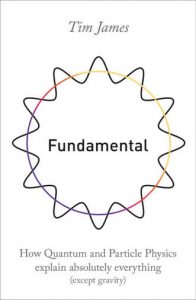 I liked this book. The concepts, even in a basic way, are well explained and it manages to simplify for the more general reader without losing rigorousness. I would also highlight its style: agile, with humour, conveying the author’s enthusiasm for the subject and science in general.
I liked this book. The concepts, even in a basic way, are well explained and it manages to simplify for the more general reader without losing rigorousness. I would also highlight its style: agile, with humour, conveying the author’s enthusiasm for the subject and science in general.
Perhaps the best “non-scientific” proof for me that it is an engaging read is that I finished it. At this level, it is not a question of difficulty (apart from the strangeness of quantum mechanics to common sense), but rather an unoriginal approach or unattractive exposition that makes me leave such books halfway through. This has not been the case, so in my opinion this book “works”.
In short, if you want to start learning about this subject or clarify doubts in case you have already read other books of this level (and you like a more casual tone), this one is highly recommended.
Note: this title was linked to the author’s website where, among other things, he presented his books, but it doesn’t seem to work: https://www.timjamesscience.com. The link has been replaced by the Amazon website.
A Student’s Guide to the Schrödinger Equation
Autor: Daniel A. Fleisch
Great introduction to Quantum Mechanics. This is already more of a textbook, or at least a complement to the standard bibliography recommended in the degrees where this subject is studied. Perhaps the clearest I have ever read about the formalism of quantum physics, with very good explanations that I had not found before.
 Although some physics-mathematical background is recommended, it can also be useful for advanced amateurs who want to go beyond the popular works. Each concept is well broken down, with good diagrams support. However, it is a book where you really get into the subject (differential equations, matrix, brackets…) so those who shy away from maths should abstain: it is not a pop-science book, however student-friendly it may be.
Although some physics-mathematical background is recommended, it can also be useful for advanced amateurs who want to go beyond the popular works. Each concept is well broken down, with good diagrams support. However, it is a book where you really get into the subject (differential equations, matrix, brackets…) so those who shy away from maths should abstain: it is not a pop-science book, however student-friendly it may be.
It covers considerably less material than a conventional textbook, but the content is designed to achieve a goal: to focus on certain fundamental concepts and try to clarify them. Colloquially speaking, it ‘rolls up its sleeves’ and goes into the details that others gloss over. For me, a 10.
Note: this is an alternative website dedicated to the book with a better design and presentation of the material. Similar content, including videos of the author and solutions to problems. In the resources tab it includes a 10-question quiz for each of the topics, which I have not seen on the original website.
No-Nonsense Quantum Mechanics
Autor: Jakob Schwichtenberg
Very much in line with the previous book by Fleisch, with a similar level and approach, although in this case it does not include problems to solve at the end of each topic. It is aimed at undergraduates looking for a more “student-friendly” book than the usual ones recommended.
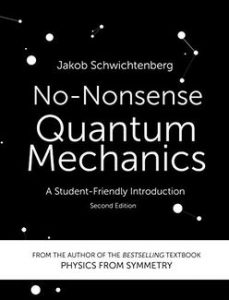 I have already commented on a book by this author, “No-nonsense Classical Mechanics”, and although I liked this about quantum mechanics, perhaps it is not as rounded as that one.
I have already commented on a book by this author, “No-nonsense Classical Mechanics”, and although I liked this about quantum mechanics, perhaps it is not as rounded as that one.
I also think that the Student Guide I mentioned earlier is a little better in terms of explanations. In favour of this one, I would highlight a better format in paper edition (also more expensive) that leaves space for annotations. Also the inclusion of illustrative hand drawings, and notes and summaries throughout the text that help understanding.
In fact, I see it as a good complement because I think that the details of the formalism are better dealt with by Fleisch, but Schwichtenberg explains some approaches such as Noerther’s theorem and symmetries or the different formulations of Quantum Mechanics that help to obtain a higher level view -in the sense of generality- of matter.
In any case, both seem to me to be highly recommendable for the level and type of reader they are aimed at.
The Inflationary Universe
Autor: Alan H. Guth
It is a book I had long overdue (it was written in 1997) because after all it was Guth who introduced the concept of inflation into the Big Bang model in the 1980s.
Although it is a well-known book, I don’t think it is recognised as a classic along the lines of Steven Weinberg’s “Three First Minutes of the Universe”.
Perhaps this is because Guth not only details the Inflationary Universe models (he also describes variants of the one he originally proposed), but also many other aspects.
The description of how all the ideas about these models were developed (conjectures, discards, variants…) is interesting, but at the same time it has an approach that makes me doubt what kind of reader it is aimed at: laymen, advanced amateurs, fellow physicists? I guess it’s for everyone.
It is a mixture in different proportions of:
- Scientific popularization.
- Detailed log of who proposed each idea, made a development or took experimental data, when, where and who might have known about it.
- How physics research works (mainly in US universities and international seminar).
- The upheavals that Guth suffered, both personally and professionally, while working on this
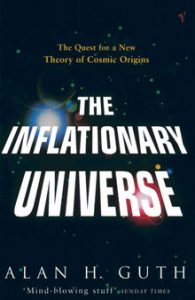 I find it recommendable because it is first-hand information, and because Guth likes to explain thoroughly and in detail. Moreover, he comes across as an honest and not very arrogant scientist, who acknowledges many of the contributions made by other physicists (perhaps an omission of Linde’s work in one of his publications has made him even more extreme in this behaviour).
I find it recommendable because it is first-hand information, and because Guth likes to explain thoroughly and in detail. Moreover, he comes across as an honest and not very arrogant scientist, who acknowledges many of the contributions made by other physicists (perhaps an omission of Linde’s work in one of his publications has made him even more extreme in this behaviour).
He admits that he came up with a kind of general concept or framework, Inflation, which others have continued to refine. I don’t remember the physicist who commented that Guth’s inflationary model was successful because it was not presented as a very finished theory, but something incomplete that created an ‘industry’ that gave work to many other physicists to develop it.
In short, an interesting book, with a lot of information and good explanations, although for the layman it would be advisable to read some more concise and lighter works before tackling this one.
El bosón de Higgs
Autores: Alberto Casas y Teresa Rodrigo
First of all, this book doesn’t have an English edition, but I have included it for those who can read Spanish.
It’s a short one, barely 100 pages, but it achieves its goal: to explain the theoretical framework of the Higgs field and the Higgs boson in the context of the Standard Model of Particles and the research and experimental evidence to confirm its existence. It is part of the CSIC collection “What do we know about?”
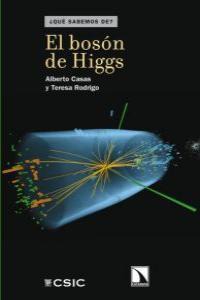
It has a neutral, not boring, style of exposition. I mean it is neither light-hearted or enthusiastic nor academic, but I wish I could be as concise as the authors in presenting complex concepts in such a clear and understandable way. Although I like detailed explanations, I also appreciate books of this kind that know how to synthesise a subject and get down to the specifics, so that I can combine works of both types.
For readers who are less versed with the subject, it might be useful to start with popular books that provide them with a certain foundation (along the lines of ‘Fundamentals’ mentioned above) in order to get more out of this one.
There’s also a section dedicated to the Particle Accelerator (LHC) and the analysis of the experiments in search of the Higgs boson. While still being compact like the rest of the book, I found the information to be very interesting and detailed.
The Book of Universes
Autor: John D. Barrow
Barrow is one of my favourite pop-science authors. I had already discussed one of his books, “The Universe That Discovered Itself”, on this blog. When I heard of his death, it was like losing an acquaintance, because I have enjoyed reading him for many years.
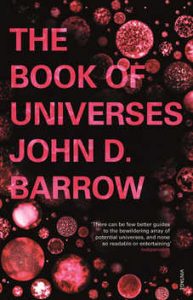
As I commented in that post, I like his style of writing. He combines his knowledge of the subject with a broad culture that he knows how to manage in his works, without overdoing it, but making them different.
On the one hand, its clever selection of quotations – fresh, original, not hackneyed – play a role in their own right in the content and fit in very well. Nothing to do with the mechanical use that other authors make of this resource, as if it were an obligation, and which seem to be photocopied from one book to another – or is it that the publishers insert them from a pool they have? Although it may seem a minor detail, when I read a popular science book, of course I expect clear and well-elaborated explanations, but I also want to enjoy the reading itself.
On the other hand, the little-known characters and stories that you discover throughout the book. Some are anecdotal, but very curious or amusing. Others have gone unnoticed, despite their important contribution to science. In both cases, they surprise me and I think they greatly enrich his texts. For example, I liked the one that refers to Gödel and his model of the rotating Universe, of which I was unaware.
As for the content itself, in this book you will get to know the catalogue of models of Universes – starting with the conjectures about the Solar System, the Galaxies… – that have been proposed in the West, from the Greeks to the present day (the book is from 2011). A journey from Aristotle, through Newton, Kant, Schwarzschild, Gamow, Einstein, Hoyle and many others. Of course, and mainly, the models derived from the hypotheses and proposed solutions to Einstein’s equation of General Relativity applied to the Universe are described. You will find the best-known models: de Sitter, Friedmann, Lemaitre, ,…but also others that will surprise you if you are not an expert in cosmology.
Perhaps the virtue of this book may also be its ‘weakness’: it is not easy to understand in all cases what was being proposed because logically there are no detailed explanations of each idea put forward: it would have turned into an encyclopaedia!.
Nevertheless, this was the aim of the book: to take us through the history of cosmology, from the most classical and simple models, to the most advanced and complex ones, going even into the realm of the most speculative or bizarre hypotheses.
What I have not found so much in this book are the interesting philosophical reflections that Barrow usually makes on the scientific theories or hypotheses he presents.
Of course, he conveys the capacity of human beings to try to devise plausible models for such a complex question as the origin and structure of the Universe. He also wonders about the significance of different models, such as the theory of multiverses or whether we can live in a simulation, but on this occasion this is not the main focus of the book.
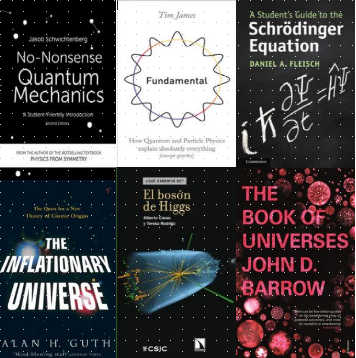
Comments